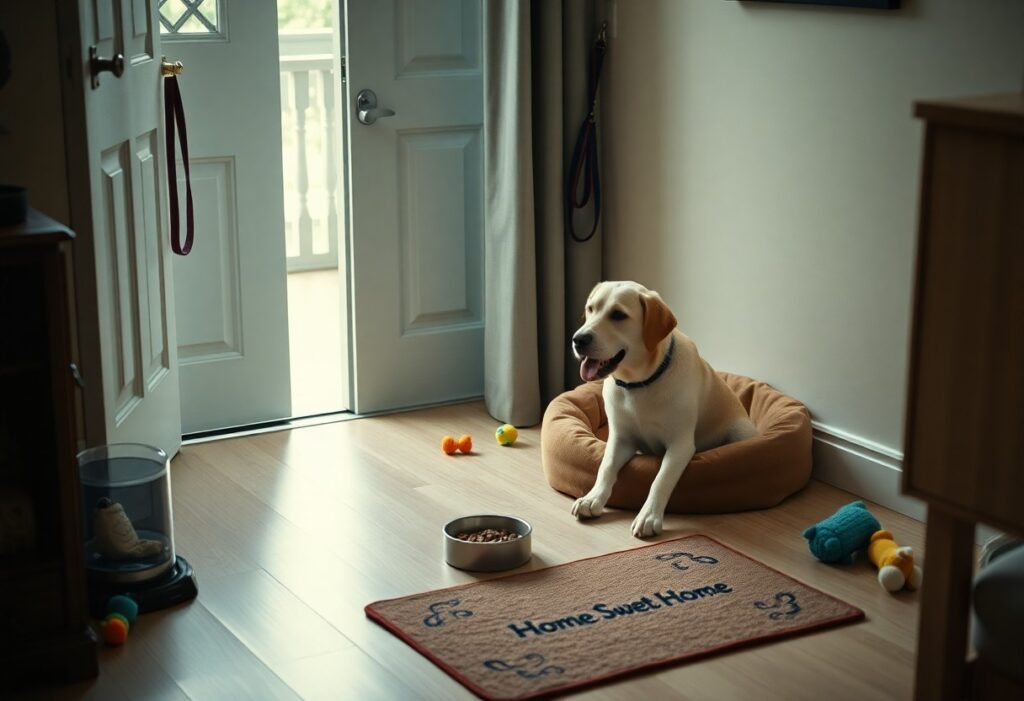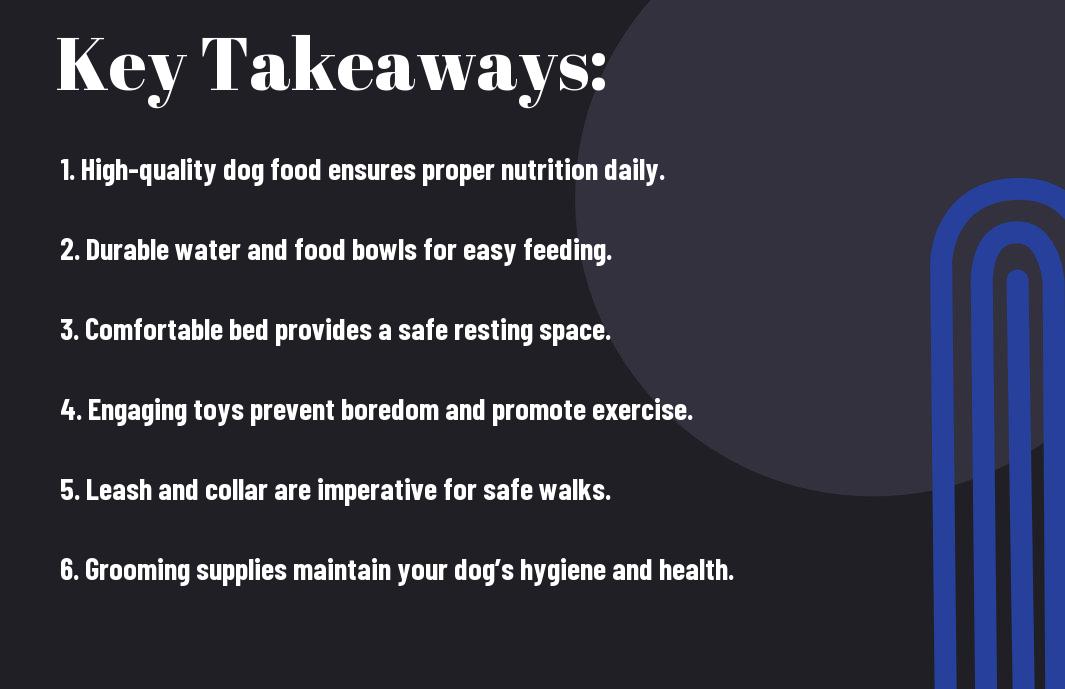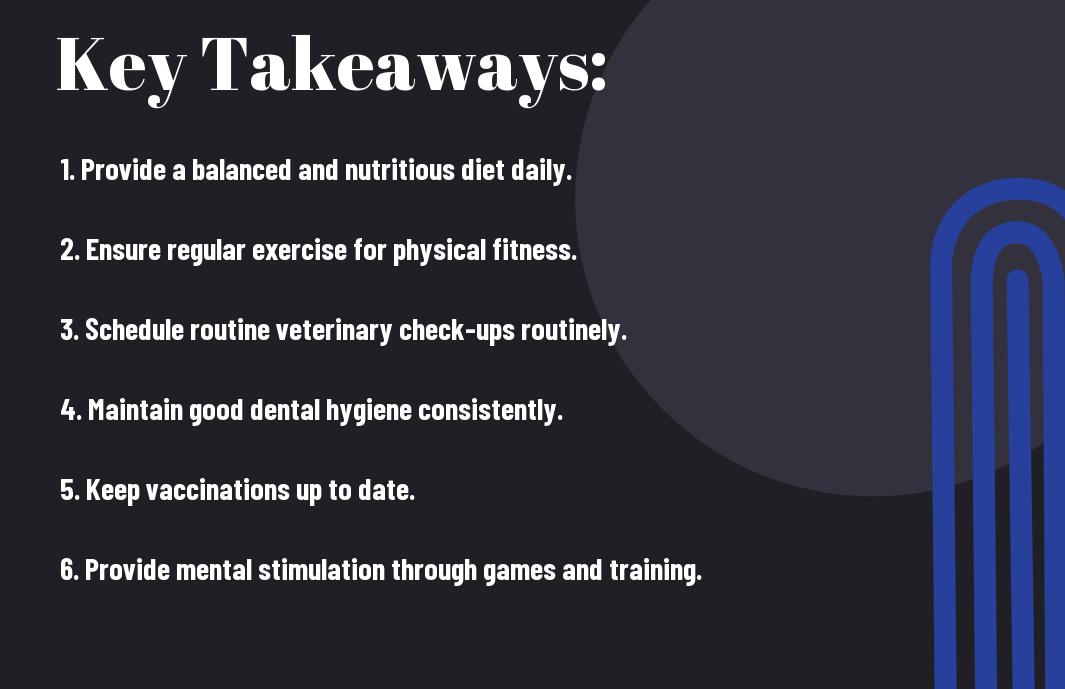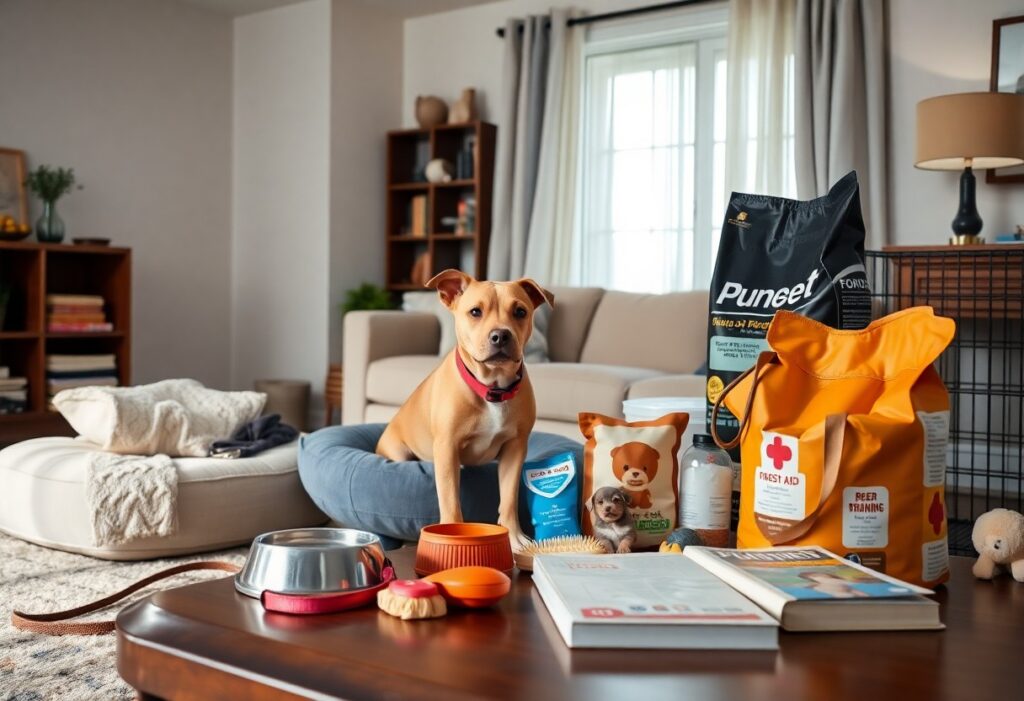Just bringing a new dog into your life can be an exciting yet overwhelming experience. To ensure a smooth transition, you’ll need to prepare your home and gather the necessary supplies that cater to your pet’s health and happiness. Investing in high-quality food, appropriate toys, and a safe space will make a big difference. Additionally, understanding basic training and establishing a routine can help foster a loving environment. Follow this guide to arm yourself with everything your new furry friend needs to feel right at home.
Key Takeaways:
- Prepare your home by creating a designated space for your new dog, including a bed, toys, and food and water bowls.
- Establish a consistent routine for feeding, bathroom breaks, and exercise to help your new pet feel secure and acclimate to their new environment.
- Introduce your new dog to family members and other pets gradually, ensuring a positive and safe interaction to foster trust and companionship.
The Essential Supplies for Your New Companion
Building a solid foundation for your new furry friend involves gathering vital supplies that cater to their needs and preferences. This includes items for safety, comfort, and fun. The right gear not only makes life easier for you but also ensures your new dog feels right at home. Focus on high-quality products that will last and meet your pup’s requirements.
Must-Have Gear: Collars, Leashes, and Identification
Equipping your dog with a reliable collar and a sturdy leash is non-negotiable. The collar should fit snugly but not too tight, allowing for a finger’s width of space. Don’t forget to attach an identification tag that includes your contact information. A leash, ideally between 4 to 6 feet long, provides you with the control you need during walks, while also keeping your dog safe from potential hazards.
Creating a Safe Haven: Beds, Crates, and Baby Gates
Providing your new dog with a safe space is vital for their well-being. A comfortable bed gives them a cozy spot for rest, while a properly sized crate can help with training and create a sense of security. Utilizing baby gates can effectively manage your dog’s access to certain areas in your home, ensuring they stay away from danger zones while adjusting to their new environment.
The right bed offers more than just comfort; it becomes your dog’s sanctuary. Select a size that allows them to stretch out comfortably. A crate is not just for transportation; it can be a training aid that gives your dog a designated space to relax and feel secure. Choosing a crate that’s too large can lead to accidents, so ensure it’s appropriately sized. Baby gates are invaluable tools to restrict access to stairs and rooms that may contain hazards, giving you peace of mind as your furry companion explores their new surroundings. Providing these vital elements will help your dog transition smoothly and feel comfortable in their new home.

Nutrition Fundamentals: Feeding Your Furry Friend
Your dog’s diet plays a vital role in their overall health and well-being. Selecting the right food ensures they receive the necessary nutrients to grow and thrive. As your dog settles into their new home, understanding their nutritional needs will help you make informed choices about their meals and snacks.
Understanding Dietary Needs: Breed, Age, and Size Considerations
Every dog has unique dietary requirements based on their breed, age, and size. Puppies, for instance, require a diet rich in protein and fat to support their rapid growth, while senior dogs may benefit from lower-calorie options to maintain a healthy weight. Additionally, different breeds can have specific nutritional needs tied to their activity level and predispositions to certain health issues, making it vital to tailor his meals accordingly.
Choosing the Right Food: Brands, Ingredients, and Allergies
Finding the right food involves evaluating brands, scrutinizing ingredients, and considering any known allergies your dog may have. Opt for highly-rated brands that prioritize high-quality protein sources and avoid fillers like corn and soy. Pay attention to the AAFCO seal on the packaging, indicating it meets established nutritional standards. Additionally, consult with your veterinarian if your dog has specific dietary restrictions or allergies to ensure you choose the most suitable option.
Brands vary widely, and some may even offer specialized formulas for health conditions such as sensitivity or intolerances. Ingredients serve as a key factor beyond just protein; look for whole grains, fruits, and vegetables that provide vital vitamins and minerals. In cases of allergies, such as those to wheat or beef, many brands offer grain-free or hypoallergenic diets designed specifically to cater to these sensitivities. Understanding your dog’s nutritional needs will inform your choices and help prevent any adverse reactions.
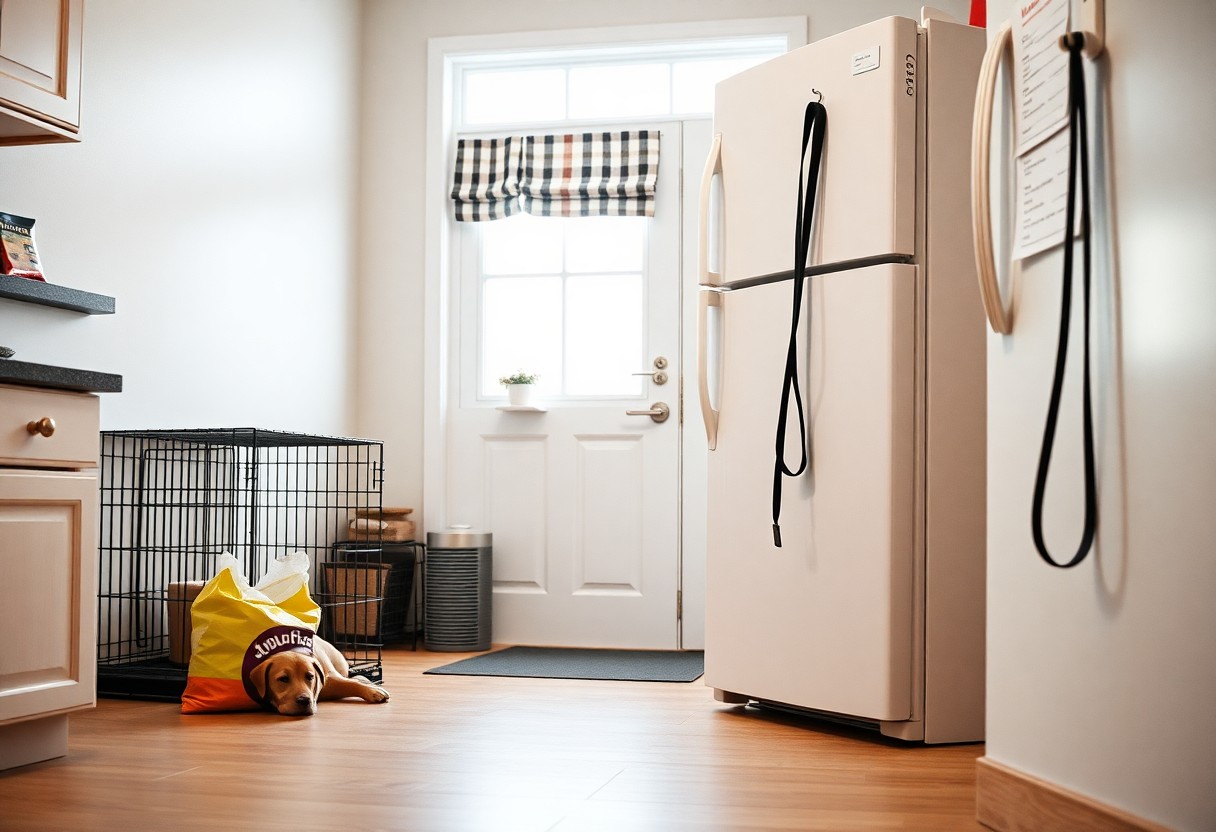
Setting Boundaries: Training Tips for a Harmonious Home
Creating a peaceful coexistence with your new pet involves establishing clear boundaries from the get-go. Dog training doesn’t just shape behavior; it also cultivates a harmonious environment for both of you. Use consistent cues, routines, and rewards to reinforce positive actions. Start by identifying areas in your home that require restrictions, such as furniture or specific rooms. Be firm yet gentle in your approach, making sure your new companion understands the limits. This will set the foundation for a well-ordered household.
- Consistent cues
- Positive reinforcement
- Boundaries
- Routines
Essential Commands for a Well-Behaved Dog
Teaching your dog crucial commands enhances communication and builds mutual respect. Start with basic commands like “sit,” “stay,” and “come.” Use treats as incentives, ensuring that your dog connects the action with a reward. Gradually introduce more advanced commands as your dog masters the basics. This not only makes your interactions smoother but also helps keep your dog safe in various situations. Building a solid command list will enrich your relationship and make your life easier.
Effective House Training Strategies
House training your dog requires patience but can be streamlined with effective strategies. Establish a strict bathroom schedule, taking your dog out at regular intervals, especially after meals or naps. Designate a specific spot outdoors for bathroom breaks and reward your dog immediately after they eliminate in the right place. Supervise your dog indoors, using a crate if necessary to minimize accidents, and clean any messes thoroughly to remove odors that might attract your pet back to the same spot. This methodical approach lays the groundwork for successful house training.
Establishing a routine is vital for effective house training. Typically, puppies may need bathroom breaks every two hours and immediately after waking, eating, or playing. Be diligent about rewarding successful outings, which reinforces positive behavior. If accidents happen, avoid scolding; instead, redirect and reinforce the desired behavior next time. Each dog learns at its own pace, so adjusting your strategy to fit their needs ensures long-term success in house training.
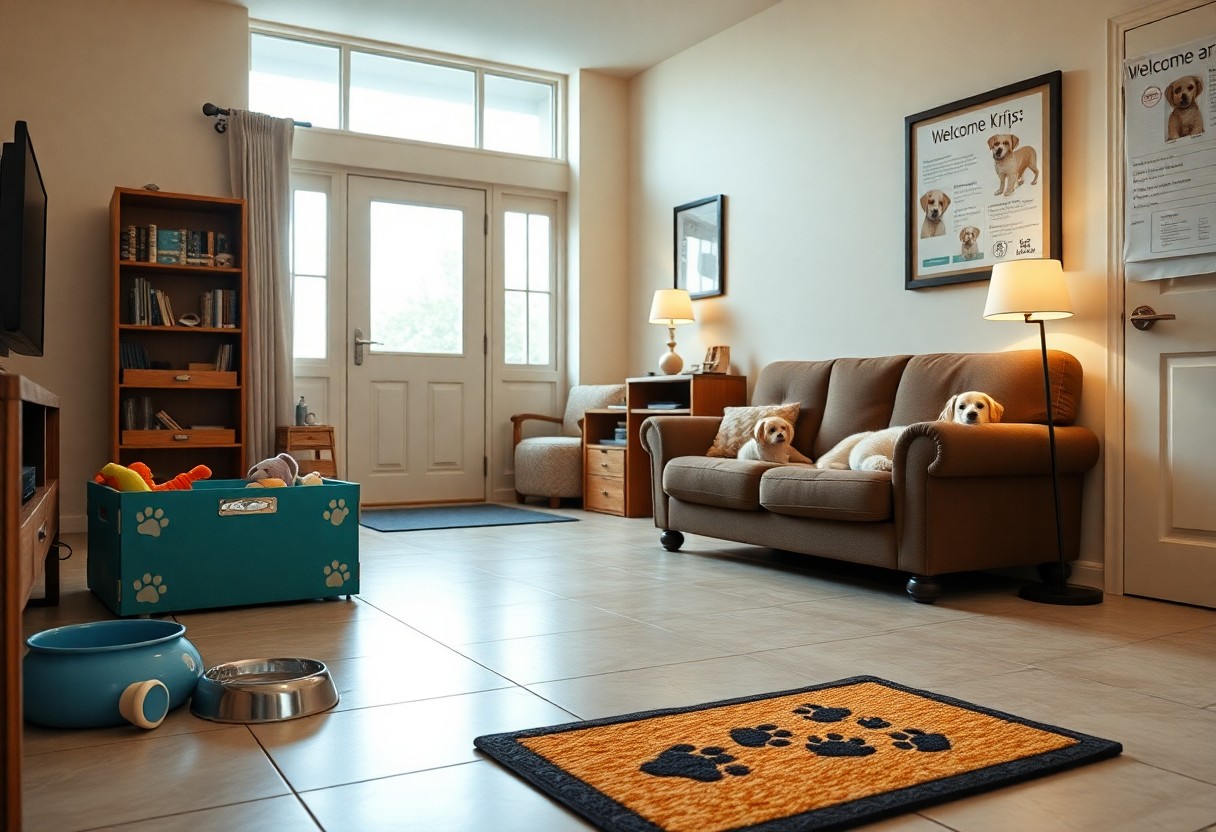
Socialization Strategies: Introducing Your New Dog to the World
Helping your new dog adjust to their environment is imperative for their well-being and behavior. Start with gradual exposure to a variety of sights, sounds, and experiences. Whether it’s a bustling park or a quiet street, make these introductions positive and stress-free. Ensure they associate new experiences with positive reinforcements like treats or affection. This foundational socialization will greatly enhance their comfort in different settings and encourage a well-rounded temperament.
Building Confidence: Meeting Other Dogs and People
Facilitating positive encounters with other dogs and people is key to building your dog’s confidence. Start with calm, friendly dogs on a leash and encourage brief interactions. Observe your dog’s body language—if they seem uneasy, take a step back. You can also host small, controlled meet-and-greet sessions with trusted friends and their pets to allow for situational adaptability. Offering praise and rewards during these meetings will help reinforce confidence.
Outings and Adventures: Preparing for New Experiences
Outings and adventures can be thrilling yet challenging for a new dog. Gradually introduce them to a variety of environments—from bustling markets to serene parks. Each outing should be manageable in duration, avoiding overwhelm. Bring along familiar items like their favorite toy or blanket to provide comfort. Plan for short trips initially, gradually increasing the complexity and duration as they become more at ease.
Each new experience should be treated as an opportunity for growth. Start with a leash training session in your neighborhood, allowing them to explore while remaining secure. Visit nearby pet-friendly stores or outdoor cafes where your dog can observe people and other pets from a safe distance. Gradually increase the stimulation by bringing them to dog parks or busy public events once they display calmness and curiosity. The goal is to create a balanced blend of social exposure and positive experiences, ensuring your dog thrives in various settings.
Health and Wellness: Establishing a Routine
Establishing a routine for your new dog fosters a sense of security and helps them adapt more quickly to their new surroundings. Consistency in feeding, bathroom breaks, exercise, and training will provide structure, which is vital for your dog’s physical and mental wellness. Consider adding regular playtime and socialization opportunities to keep your pup engaged and happy. Monitor any changes in behavior or health, as these could indicate underlying issues, and adapt your routine as necessary to meet their evolving needs.
Finding the Right Veterinarian and Initial Health Checks
Selecting a veterinarian is one of the first steps in ensuring your new dog’s health. Look for a vet who specializes in dogs and has a good reputation within your community. Schedule an initial health check as soon as possible, as this will help identify any existing conditions and create a baseline for future check-ups. Your vet can also offer guidance on nutrition, exercise, and overall well-being to help you provide the best care for your furry companion.
Vaccination Schedules and Preventative Care
Vaccination is vital in protecting your dog against serious illnesses and ensures they lead a healthy life. Following a proper vaccination schedule not only safeguards your pet’s health but also helps in preventing the spread of diseases within your community. Your veterinarian will provide a tailored plan based on your dog’s age, breed, and lifestyle, including core vaccines like rabies, parvovirus, and distemper, as well as recommended vaccines based on your dog’s specific needs. Regular preventative care visits are just as important, offering a chance to discuss flea and tick prevention, heartworm treatments, and dental care that contribute significantly to your dog’s overall wellness.
Summing up
With these considerations in mind, you can create a welcoming environment for your new dog that meets their needs and helps them settle in comfortably. Ensuring you have the right supplies, a safe space, and an understanding of your new pet’s behavior will facilitate a smooth transition. By being prepared and attentive, you’ll not only enhance your dog’s well-being but also strengthen the bond between you both, paving the way for a happy companionship.
FAQ
Q: What supplies do I need to have ready before bringing my new dog home?
A: It’s important to gather several imperatives to ensure your new dog feels comfortable and secure in their new environment. Key items to have ready include a sturdy dog collar with identification tags, a leash, food and water bowls, high-quality dog food appropriate for their age and size, a comfortable bed or crate for resting, chew toys to keep them entertained, and grooming tools for maintaining their coat. Additionally, consider any specific needs related to their breed such as training pads or specific types of toys that stimulate their natural instincts.
Q: How can I help my new dog acclimate to their new home?
A: Acclimating a new dog to your home involves creating a calm and inviting atmosphere. Start by keeping their new area quiet and free from too much activity. Allow them to explore their environment at their own pace. Establish a routine for feeding, walks, and playtime to help them feel secure in knowing what to expect. Gradually introduce them to different areas of your home and family members. Be patient, as it may take some time for them to adjust fully. Encourage positive experiences through gentle training and rewards, and avoid overwhelming them with too much stimulation or activity.
Q: What should I know about training my new dog?
A: Training is an imperative part of welcoming a new dog into your home. Start with basic commands such as sit, stay, come, and leave it, as these form the foundation for good behavior. Use positive reinforcement techniques, like treats and praise, to reward desirable behaviors. Consider enrolling in a local training class to help you and your dog learn together under professional guidance. Consistency is key, so establish clear rules and be patient as your dog learns. Avoid negative reinforcement, as this can lead to fear and anxiety. Most importantly, make training a fun and engaging process for both you and your dog.
